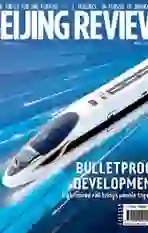Roads to Riches
2021-07-19
At the ceremony marking the centenary of the Communist Party of Chinas(CPCs) founding on July 1, Xi Jinping, General Secretary of the CPC Central Committee, President of the Peoples Republic of China, and Chairman of the Central Military Commission, declared on behalf of the Party and the people that through the continued efforts of the Party and the nation at large, China has realized its first centenary goal of building a moderately prosperous society in all respects.
This means that the Chinese nation has produced a historic resolution to the problem of absolute poverty in China, and is now marching with confident strides toward the CPCs second centenary goal of turning China into a great modern socialist country.
“If you want wealth, build roads first!” This is a conclusion China has drawn from its ascension from poverty to prosperity, namely the improvement of transport conditions that would facilitate the development of markets and flow of commodities, thus stimulating the vitality of economic and social development. From regular highways in the early stages to expressways and high-speed railways, Chinas transportation lines have connected every urban crossroads to all corners of the countryside across the nation, and even linked transportation arteries from the national to the international front.
Among them, high-speed railways, exemplified by the Beijing-Shanghai High-Speed Railway, the countrys busiest railway line launched 10 years ago, have created a full-fledged Chinese miracle. Chinas advanced high-speed railway technologies, as well as a network crisscrossing the entire country via eight north-to-south lines and eight eastto-west lines, guarantee transportation efficiency.
Extensive railway construction will not only directly serve local economic development, but also prove a supporting pillar of the overall setting for progress in their respective regions. In the meantime, an easily accessible and fast-moving transportation system will connect the nations remote areas with its city clusters, significantly easing the flow of personnel, materials, industries and technologies. BR
